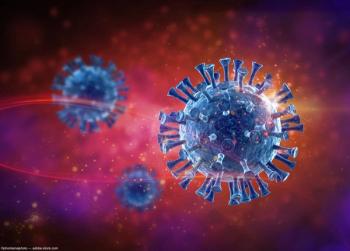
Low neutralizing antibody titers may be key to identifying breakthrough COVID-19 infections
A team of Israeli investigators sought to characterize breakthrough cases by evaluating health care workers with COVID-19 symptoms or who had been exposed to the virus.
A team of Israeli investigators reported that breakthrough COVID-19 infections among fully vaccinated healthcare workers are associated with lower levels of neutralizing antibody titers during the peri-infection period and higher peri-infection neutralizing antibody titers were associated with lower rates of infection.1
The team was led by first author Moriah Bergwerk, MB, BS, from the Infection Prevention and Control Unit of Sheba Medical Center in Tel-Hashomer, Ramat Gan, Israel.
While the BNT162b2 vaccine (Pfizer–BioNTech) vaccine is very effective, breakthrough cases do occur. The Israeli investigators sought to characterize those cases by evaluating health care workers with COVID-19 symptoms or who had been exposed to the virus.
To identify breakthrough infections, Bergwerk and colleagues conducted a case-control analysis in which they evaluated symptomatic health care workers and those exposed to the virus using reverse-transcriptase–polymerase-chain-reaction assays, antigen-detecting rapid diagnostic testing, serologic assays, and genomic sequencing.
Patients with breakthrough infections from whom antibody titers had been obtained within a week before the virus was detected (peri-infection period) were matched with four to five uninfected controls.
The investigators used generalized estimating equations to predict the geometric mean titers among cases and controls and the ratio between the titers in the two groups and they assessed the correlation between neutralizing antibody titers and N gene cycle threshold values with respect to infectivity, Bergwerk described.
Almost 1500 fully vaccinated health care workers who satisfied the inclusion criteria were included. Among them, 39 breakthrough infections were identified.
“Neutralizing antibody titers in case patients during the peri-infection period were lower than those in matched uninfected controls (case-to-control ratio, 0.361; 95% confidence interval, 0.165-0.787).
Higher peri-infection neutralizing antibody titers were associated with lower infectivity,” the investigators reported.
The results also showed that most cases were mild or had no symptoms, while 19% of patients had symptoms that lasted more than 6 weeks.
In this study group, the alpha variant predominated.
About three quarters of patient had a high viral load; however, only 59% of the breakthrough infections were detected by rapid diagnostic testing.
“In this study, we found that although the BNT162b2 vaccine is extremely effective, rare breakthrough infections carry an infectious potential and create a special challenge, since such infections are often asymptomatic and may pose a risk to vulnerable populations,” investigators concluded.
--
Reference
1. Bergwerk M, Gonen T, Lustig Y, et al. Covid-19 Breakthrough infections in vaccinated health care workers. N Engl J Med 2021;385:1474-1484; DOI: 10.1056/NEJMoa2109072
Newsletter
Don’t miss out—get Ophthalmology Times updates on the latest clinical advancements and expert interviews, straight to your inbox.













































